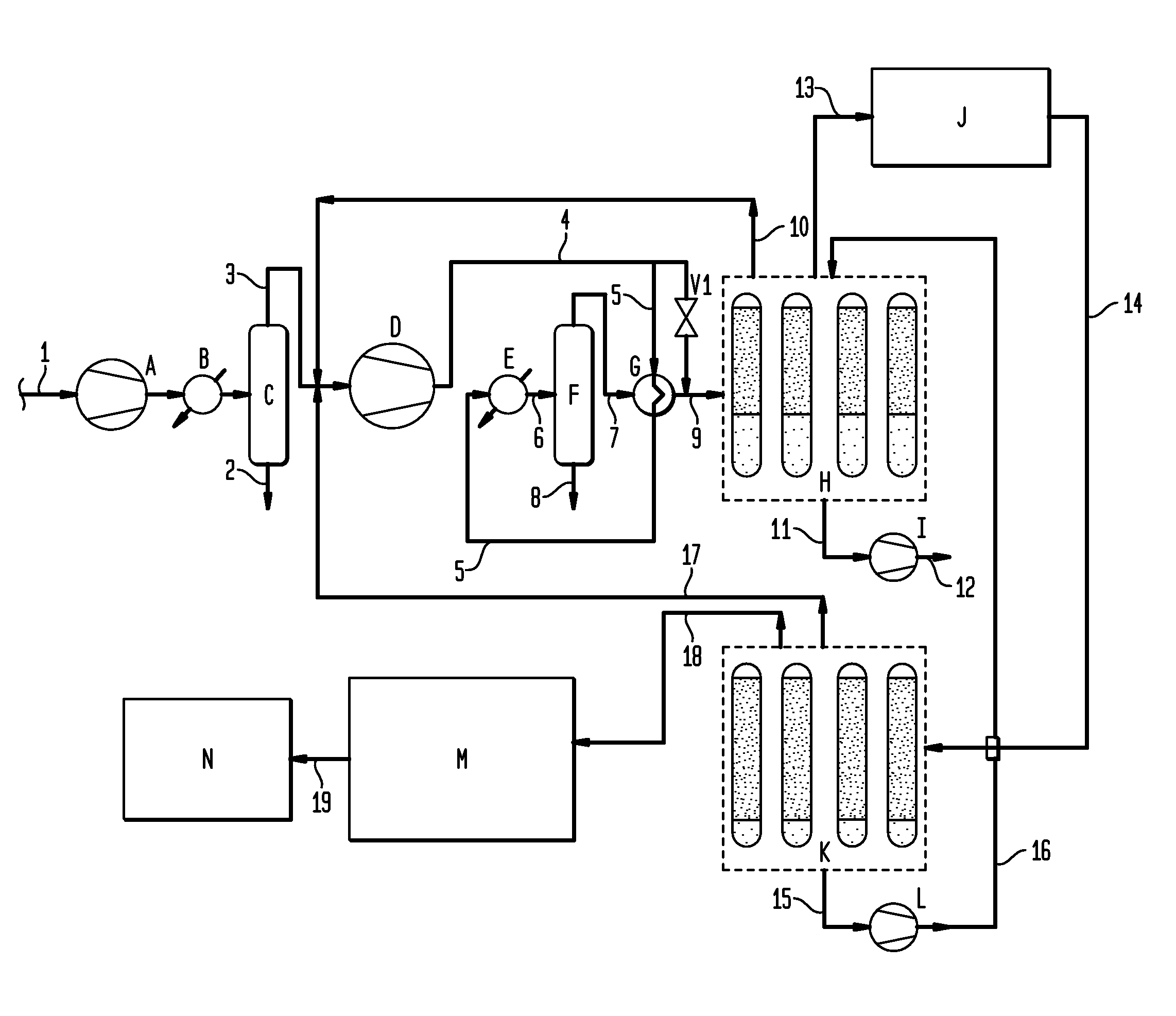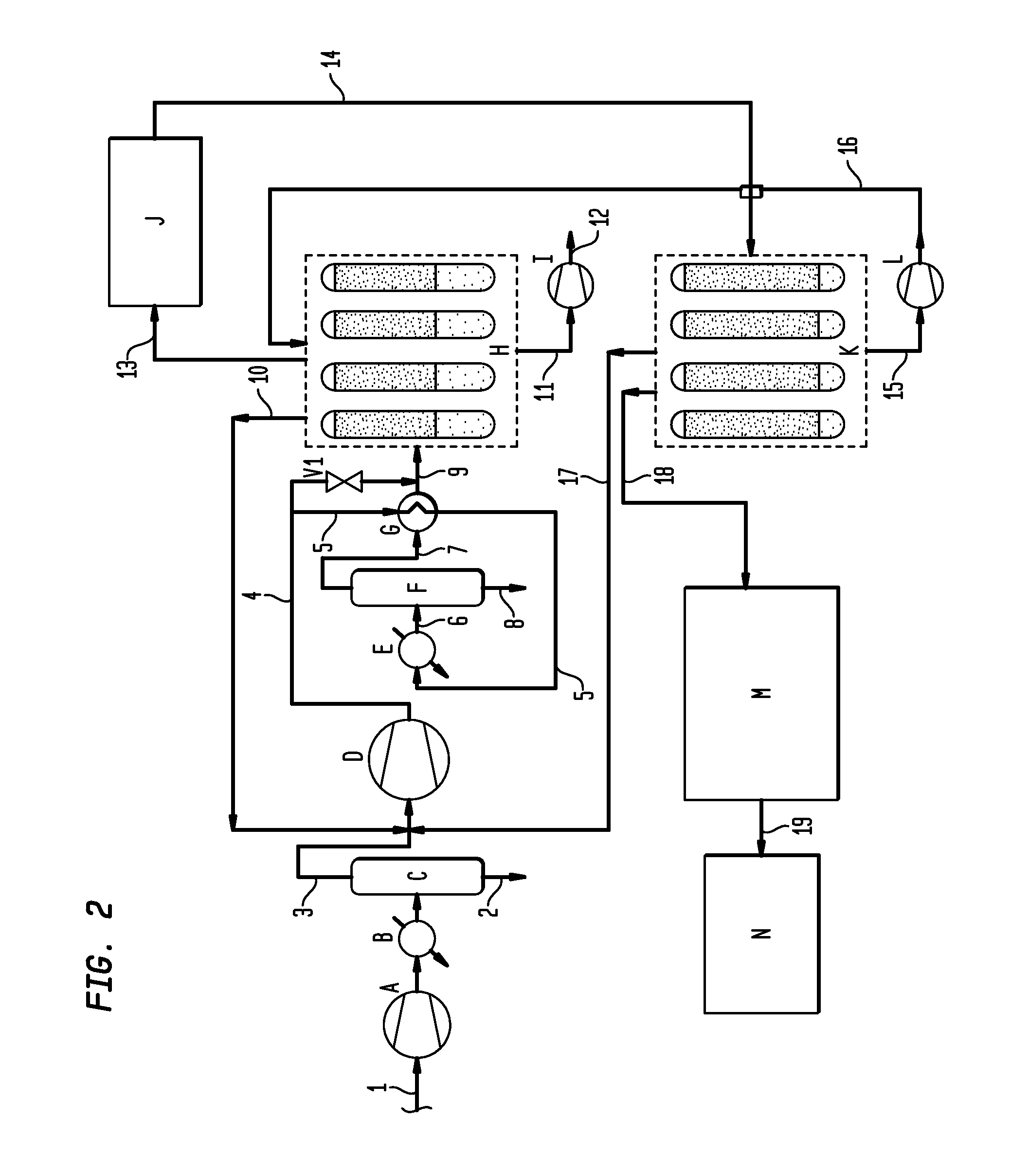Gas purification processes
a technology of gas purification and process, applied in the field of gas purification processes, can solve the problems of high energy requirements for purifying renewable methane, high capital and operating costs, and high cleanup costs of biogas/landfill gas, etc., to reduce the need for buffer tanks, facilitate flare operation or use, and reduce the effect of capital and operating costs
- Summary
- Abstract
- Description
- Claims
- Application Information
AI Technical Summary
Benefits of technology
Problems solved by technology
Method used
Image
Examples
Embodiment Construction
[0027]FIG. 2 is a schematic of a gas purification system having two adsorption units. Raw landfill gas is fed through line 1 into a feed blower A and through heat exchanger B into condenser C. Condensate is removed from the condenser C through line 2 and the gas stream exiting the condenser C through line 3 enters feed compressor D. The landfill gas is primarily composed of methane gas but contains a variety of contaminants, including water. The condenser will assist in removing water and non-methane organic compounds (NMOCs).
[0028]The landfill gas stream will exit the feed compressor D at a pressure of 80 to 250 psig through line 4 and valve V1 to contact line 9 which enters the first adsorption unit H. The compressed landfill gas stream may also enter line 5 through heat exchanger G before entering heat exchanger E and is directed through line 6 to a condenser F where condensate will be removed by line 8 and the gaseous portion fed through line 7 into G and line 9 into the first a...
PUM
| Property | Measurement | Unit |
|---|---|---|
| pressure | aaaaa | aaaaa |
| adsorption | aaaaa | aaaaa |
| pressure | aaaaa | aaaaa |
Abstract
Description
Claims
Application Information
 Login to View More
Login to View More - R&D
- Intellectual Property
- Life Sciences
- Materials
- Tech Scout
- Unparalleled Data Quality
- Higher Quality Content
- 60% Fewer Hallucinations
Browse by: Latest US Patents, China's latest patents, Technical Efficacy Thesaurus, Application Domain, Technology Topic, Popular Technical Reports.
© 2025 PatSnap. All rights reserved.Legal|Privacy policy|Modern Slavery Act Transparency Statement|Sitemap|About US| Contact US: help@patsnap.com



